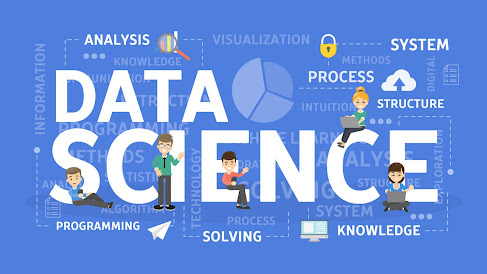Data science combines math and statistics, specialized programming, advanced analytics, artificial intelligence (AI) and machine learning with specific subject matter expertise to uncover actionable insights hidden in an organization’s data. These insights can be used to guide decision making and strategic planning.
The data science lifecycle involves various roles, tools, and processes, which enables analysts to glean actionable insights. Typically, a data science project undergoes the following stages:
- Data ingestion: The lifecycle begins with the data collection—both raw structured and unstructured data from all relevant sources using a variety of methods. These methods can include manual entry, web scraping, and real-time streaming data from systems and devices. Data sources can include structured data, such as customer data, along with unstructured data like log files, video, audio, pictures, the Internet of Things (IoT), social media, and more.
- Data storage and data processing: Since data can have different formats and structures, companies need to consider different storage systems based on the type of data that needs to be captured. Data management teams help to set standards around data storage and structure, which facilitate workflows around analytics, machine learning and deep learning models. This stage includes cleaning data, deduplicating, transforming and combining the data using ETL (extract, transform, load) jobs or other data integration technologies. This data preparation is essential for promoting data quality before loading into a data warehouse, data lake, or other repository.
- Data analysis: Here, data scientists conduct an exploratory data analysis to examine biases, patterns, ranges, and distributions of values within the data. This data analytics exploration drives hypothesis generation for a/b testing. It also allows analysts to determine the data’s relevance for use within modeling efforts for predictive analytics, machine learning, and/or deep learning. Depending on a model’s accuracy, organizations can become reliant on these insights for business decision making, allowing them to drive more scalability.
- Communicate: Finally, insights are presented as reports and other data visualizations that make the insights—and their impact on business—easier for business analysts and other decision-makers to understand. A data science programming language such as R or Python includes components for generating visualizations; alternately, data scientists can use dedicated visualization tools.
What Is Data Science Used For?
Analysis of Complex Data
Data science allows for quick and precise analysis. With various software tools and techniques at their disposal, data analysts can easily identify trends and detect patterns within even the largest and most complex datasets. This enables businesses to make better decisions, whether it’s regarding how to best segment customers or conducting a thorough market analysis.
Predictive Modeling
Data science can also be used for predictive modeling. In essence, by finding patterns in data through the use of machine learning, analysts can forecast possible future outcomes with some degree of accuracy. These models are especially useful in industries like insurance, marketing, healthcare and finance, where anticipating the likelihood of certain events happening is central to the success of the business.
Recommendation Generation
Some companies — like Netflix, Amazon and Spotify — rely on data science and big data to generate recommendations for their users based on their past behavior. It’s thanks to data science that users of these and similar platforms can be served up content that’s tailored to their preferences and interests.
Data Visualization
Data science is also used to create data visualizations — think graphs, charts, dashboards — and reporting, which helps non-technical business leaders and busy executives easily understand otherwise complex information about the state of their business.
- Regression: Regression analysis allows you to predict an outcome based on multiple variables and how those variables affect each other. Linear regression is the most commonly used regression analysis technique. Regression is a type of supervised learning.
- Classification: Classification in data science refers to the process of predicting the category or label of different data points. Like regression, classification is a subcategory of supervised learning. It’s used for applications such as email spam filters and sentiment analysis.
- Clustering: Clustering, or cluster analysis, is a data science technique used in unsupervised learning. During cluster analysis, closely associated objects within a data set are grouped together, and then each group is assigned characteristics. Clustering is done to reveal patterns within data — typically with large, unstructured data sets.
- Anomaly Detection: Anomaly detection, sometimes called outlier detection, is a data science technique in which data points with relatively extreme values are identified. Anomaly detection is used in industries like finance and cybersecurity.






No comments:
Post a Comment